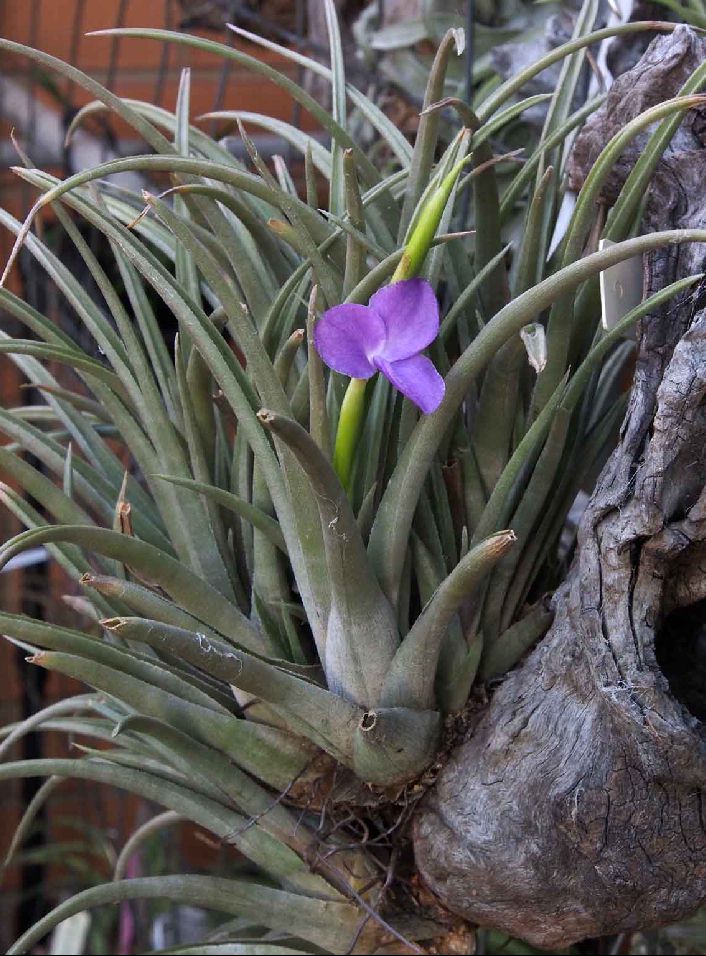
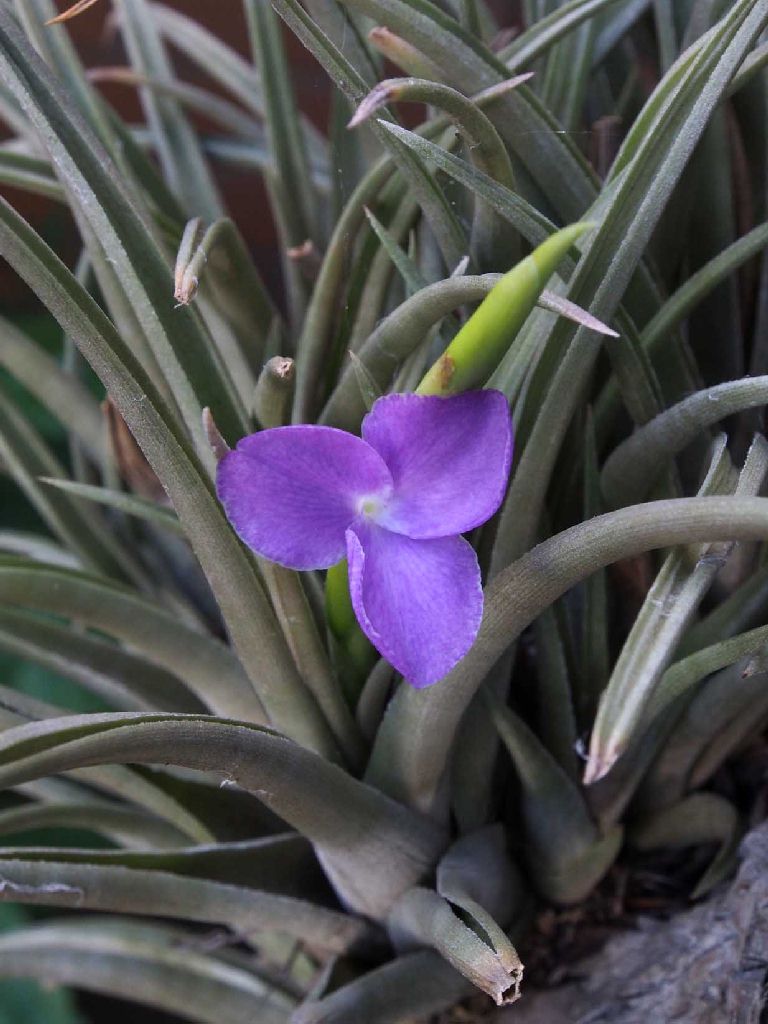
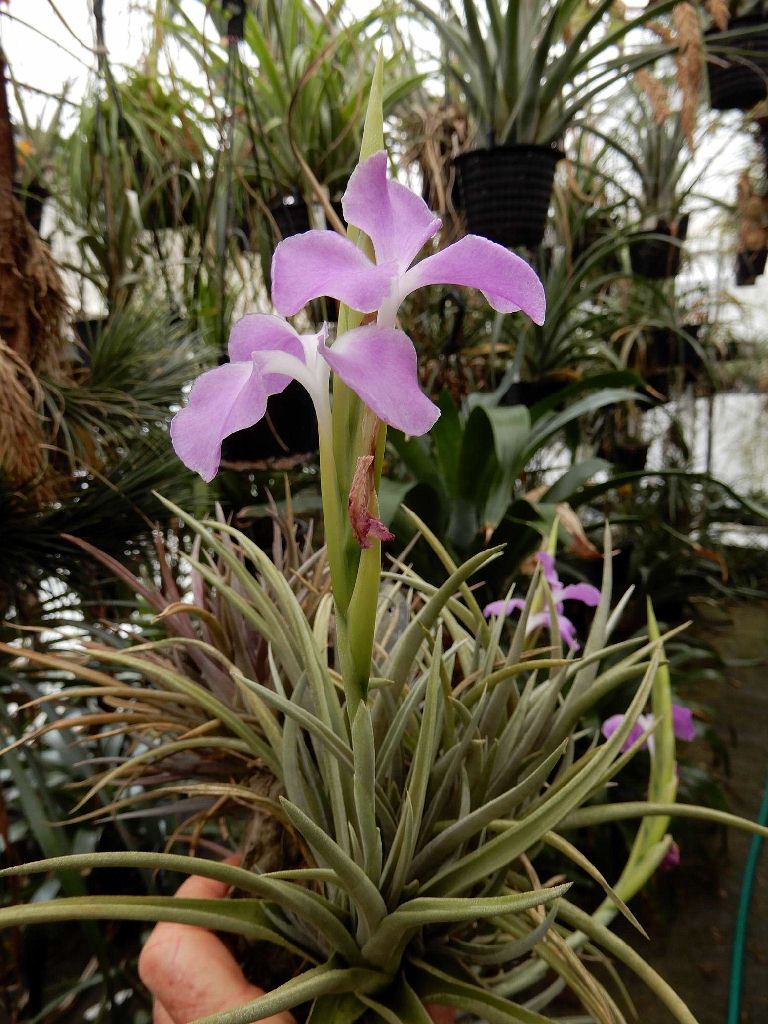
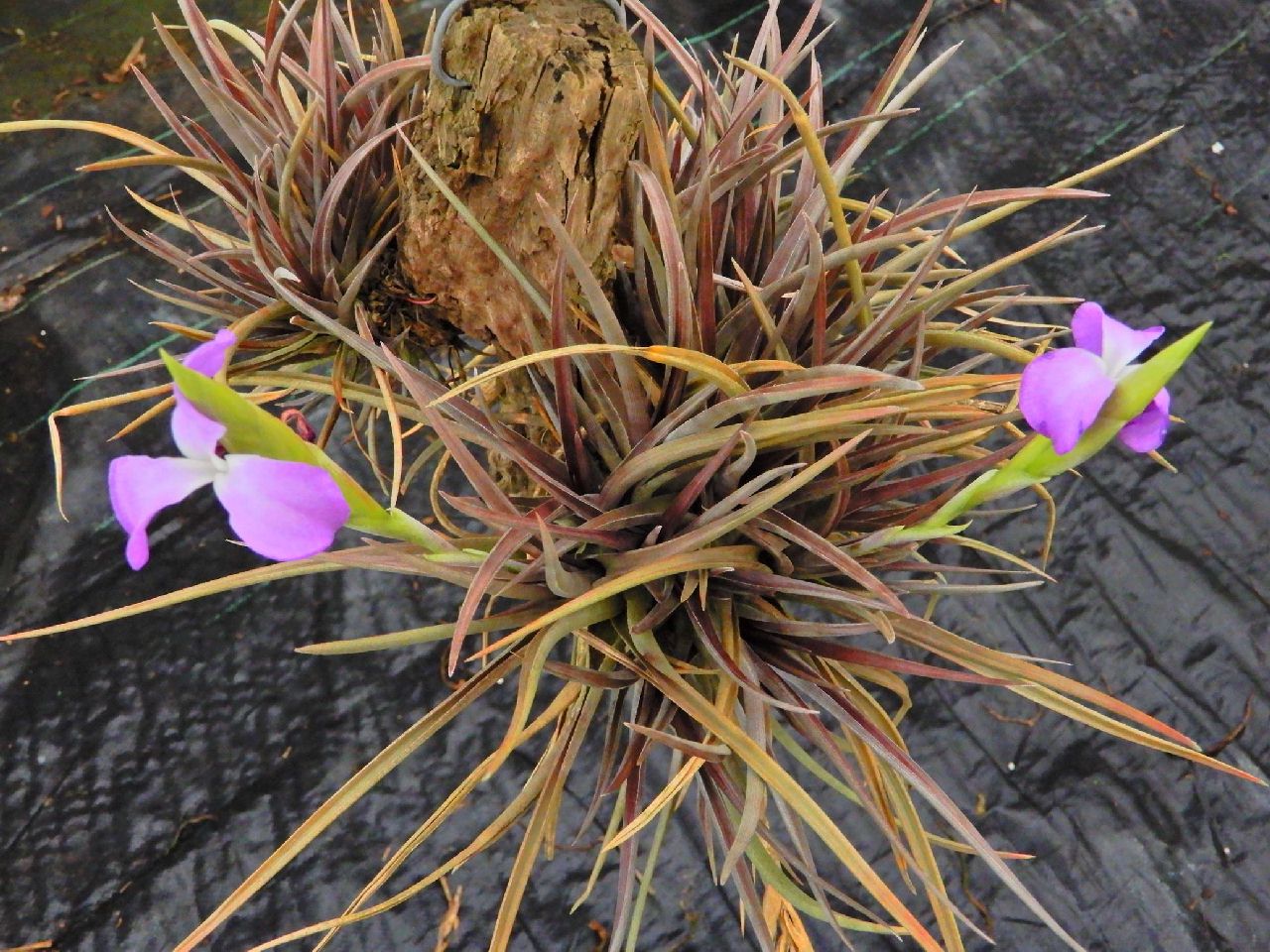
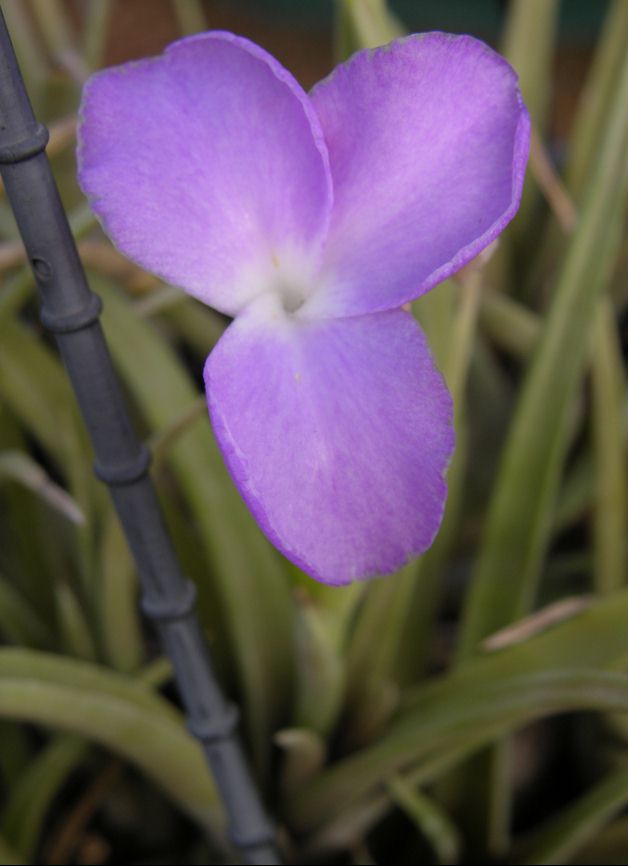
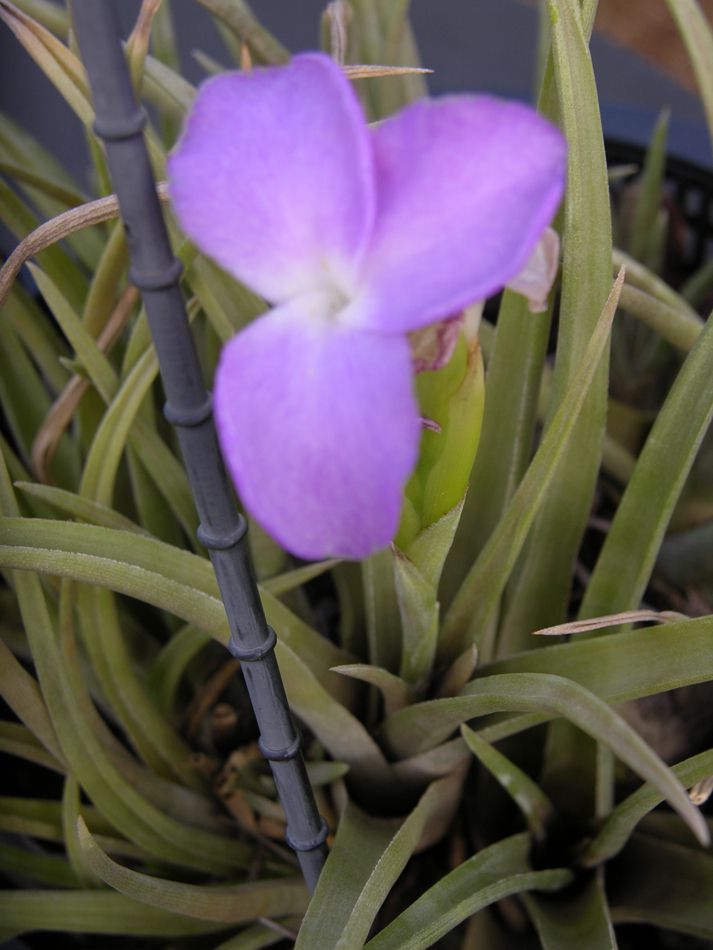
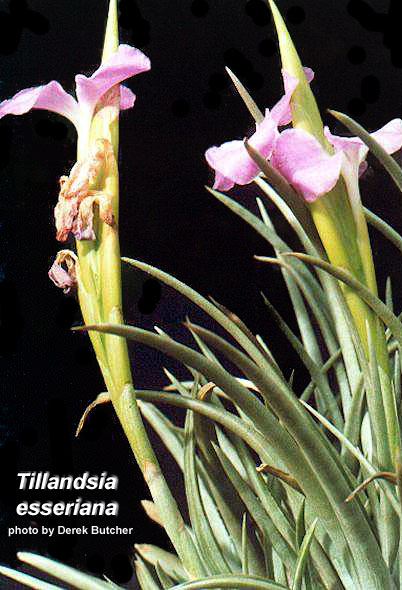
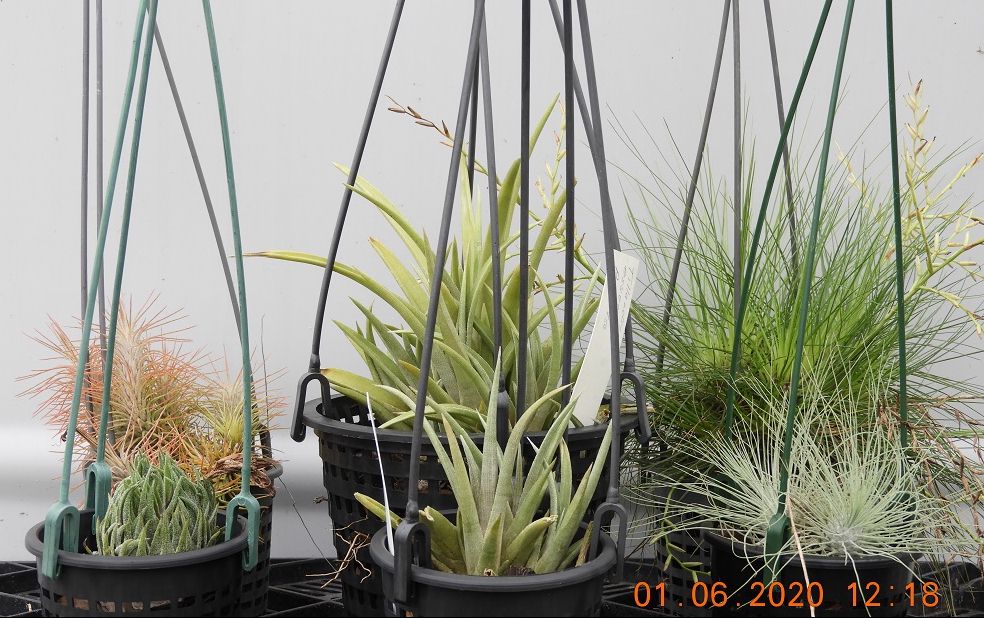
Bob Reilly 04/20 ... "About 15 years ago, I imported a clump of T. esseriana (red form) from Germany. I bought a clump rather than a single plant as Lydia Koehres (whom I bought it from) told me that T. esseriana only flowered when it was in a clump.
While my clump has flowered a few times since then, I wondered whether flowering was linked to the plantís age, rather than the fact that it was in a clump per se. So I separated out some larger (and I assumed older) plants, but they have not flowered. So, maybe the clumping hypothesis is rightóat least for T. esseriana.
Does anybody have any thoughts or observations on this topicónot just with T. esseriana, but more generally?"
Derek Butcher ... "It must be 50 years ago that I looked at Ecology and thought how simple it was once you found the trigger. 50 years later I think how difficult it is!
I never flowered my T. esseriana red form so will comment on my 'common' one. I rarely fertlise! After 5 years or so of no flowers I gave my clump away and it immediately flowered. I put it down to stress! I had also noticed that many imports flower when in quarantine!"
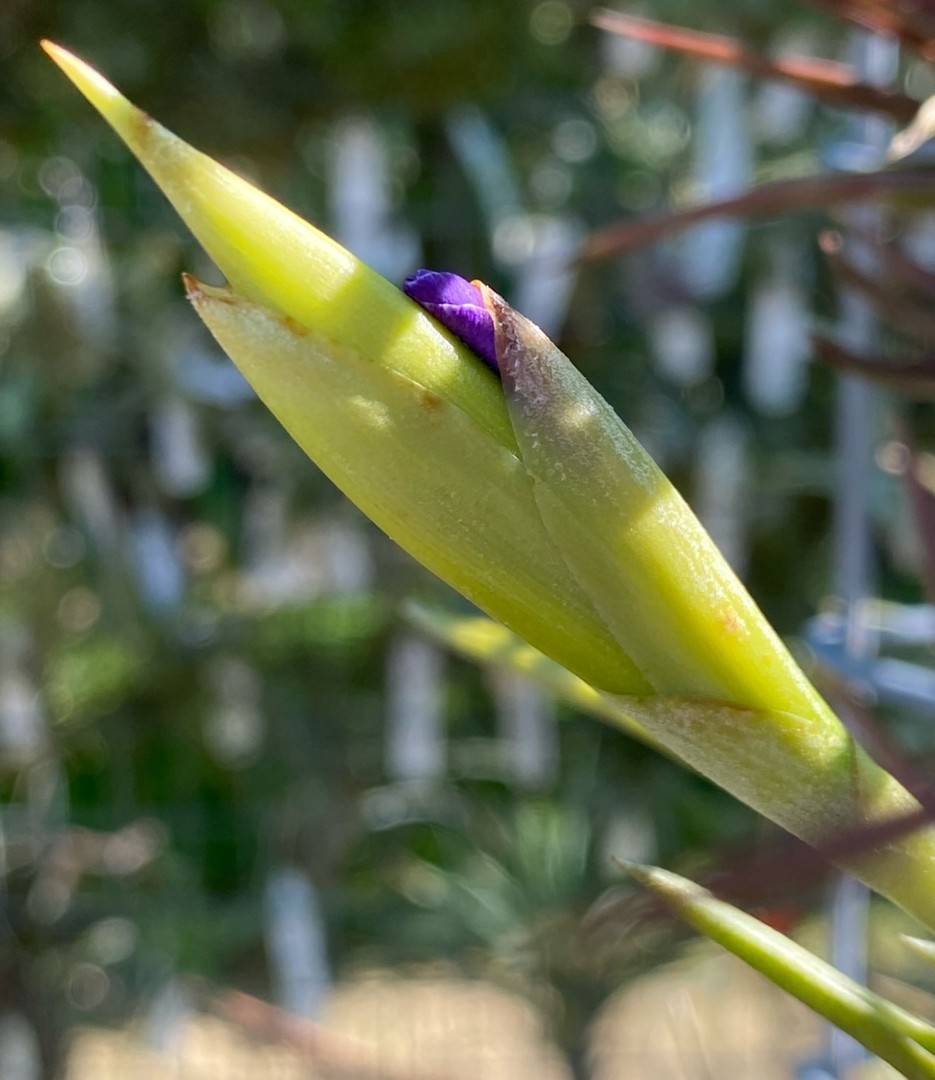
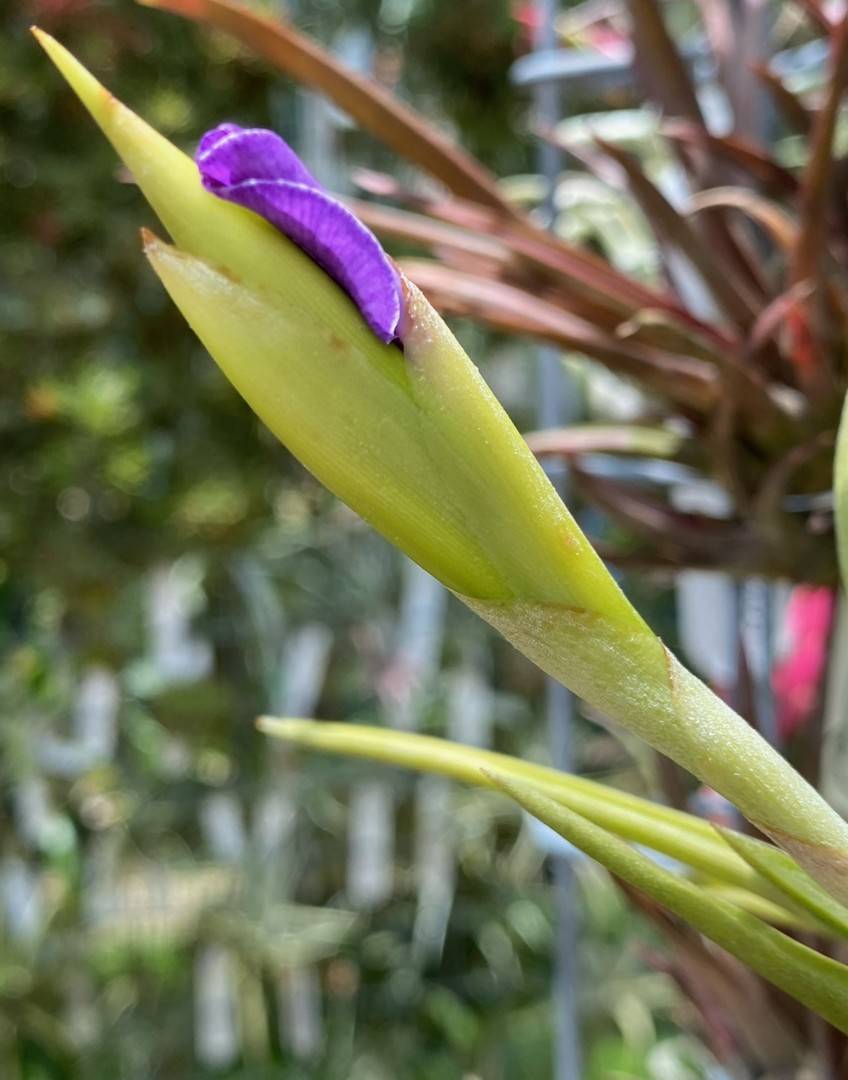
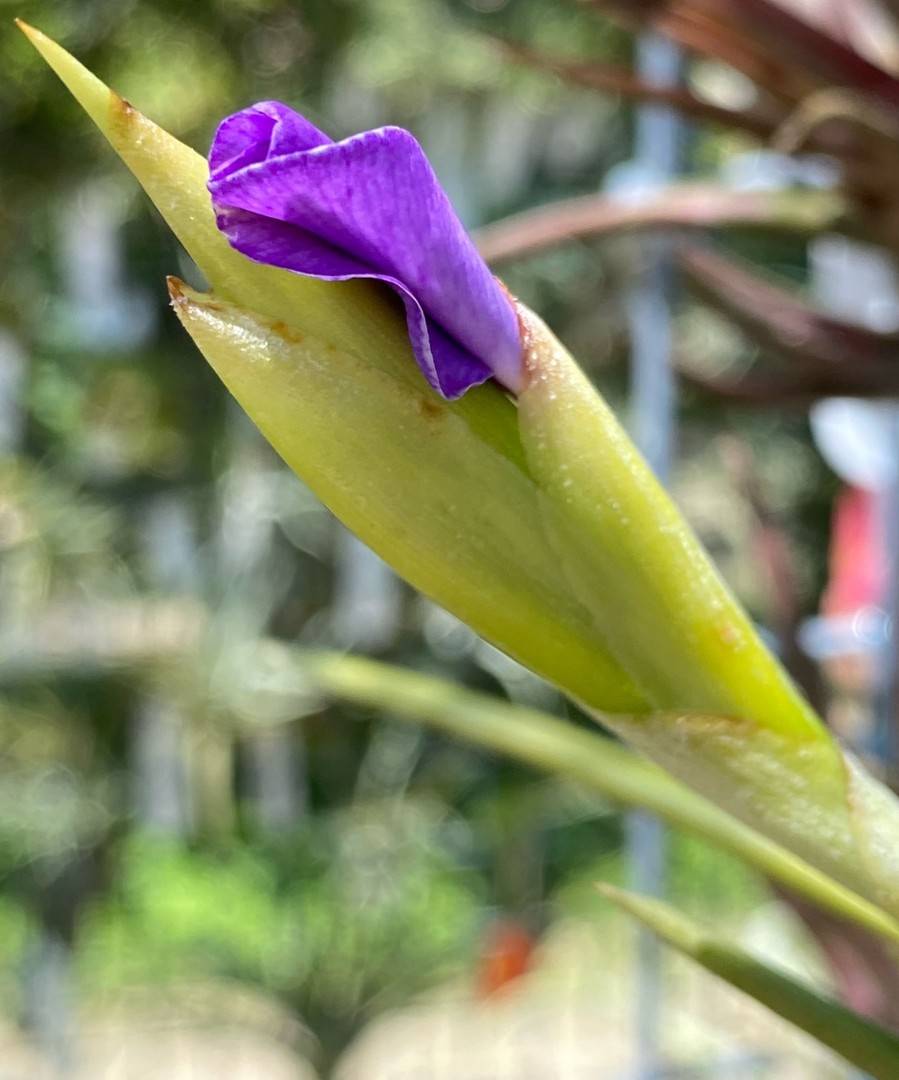
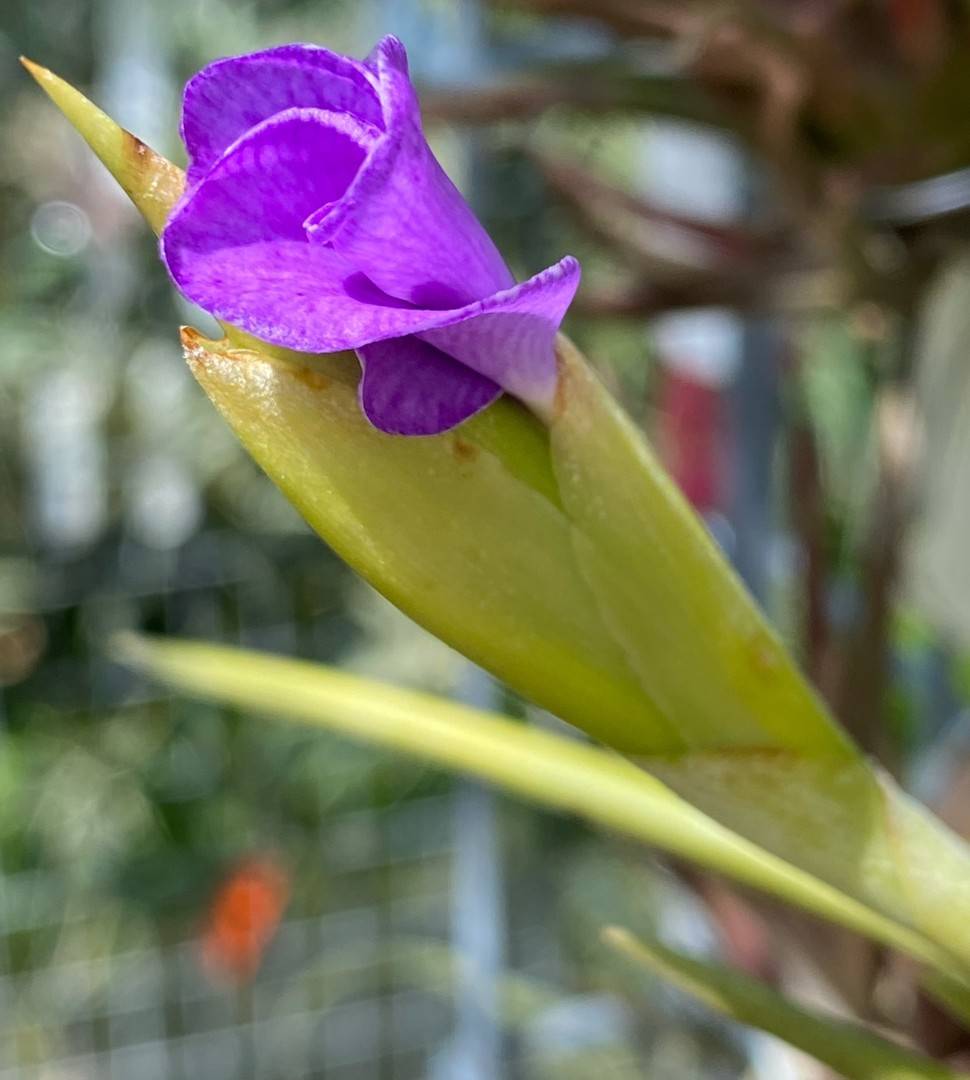
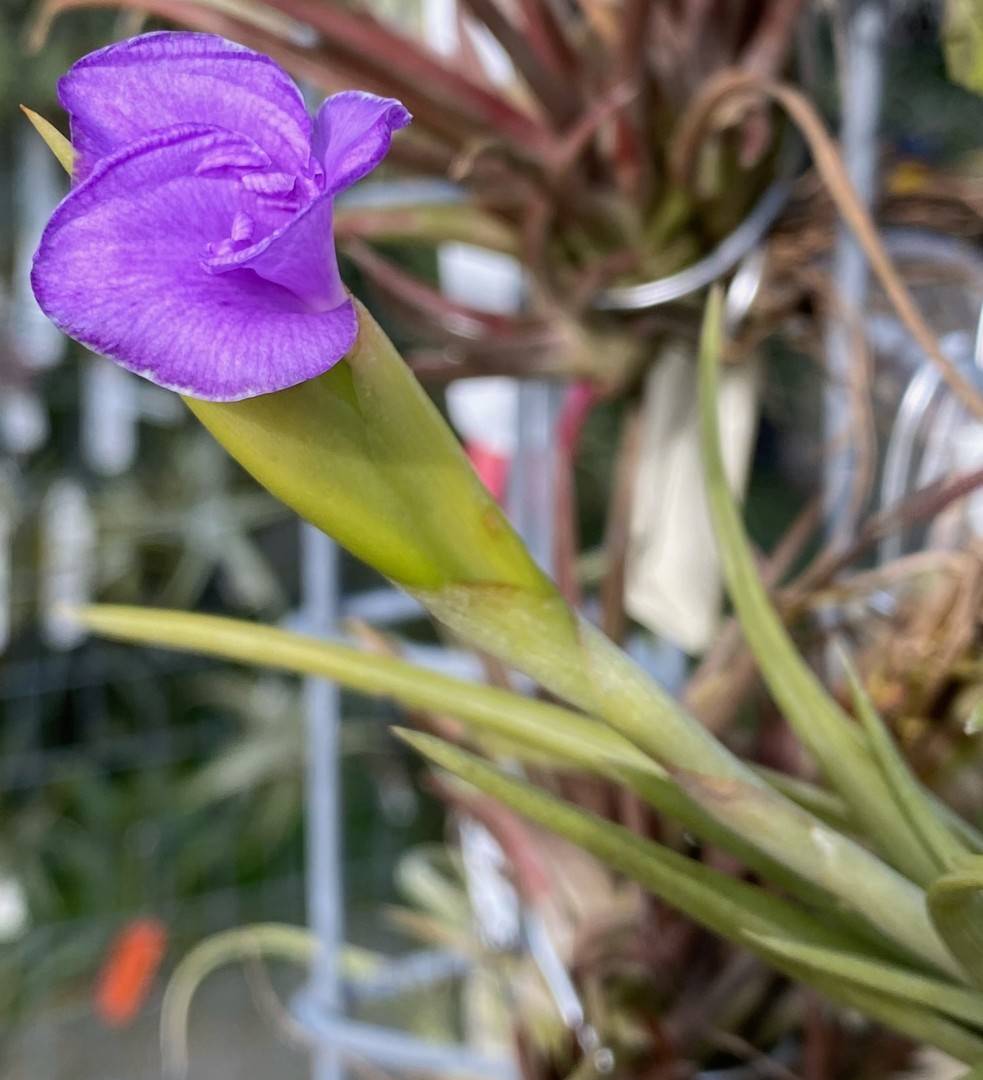
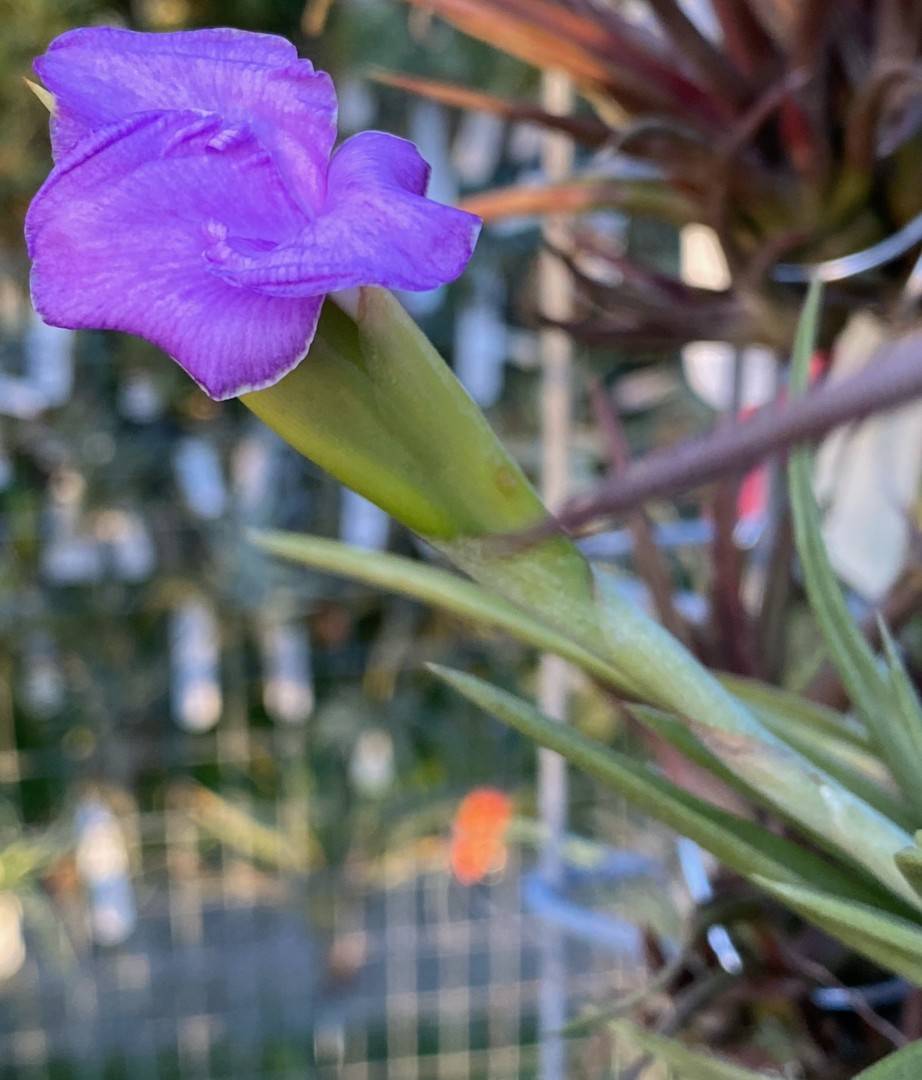
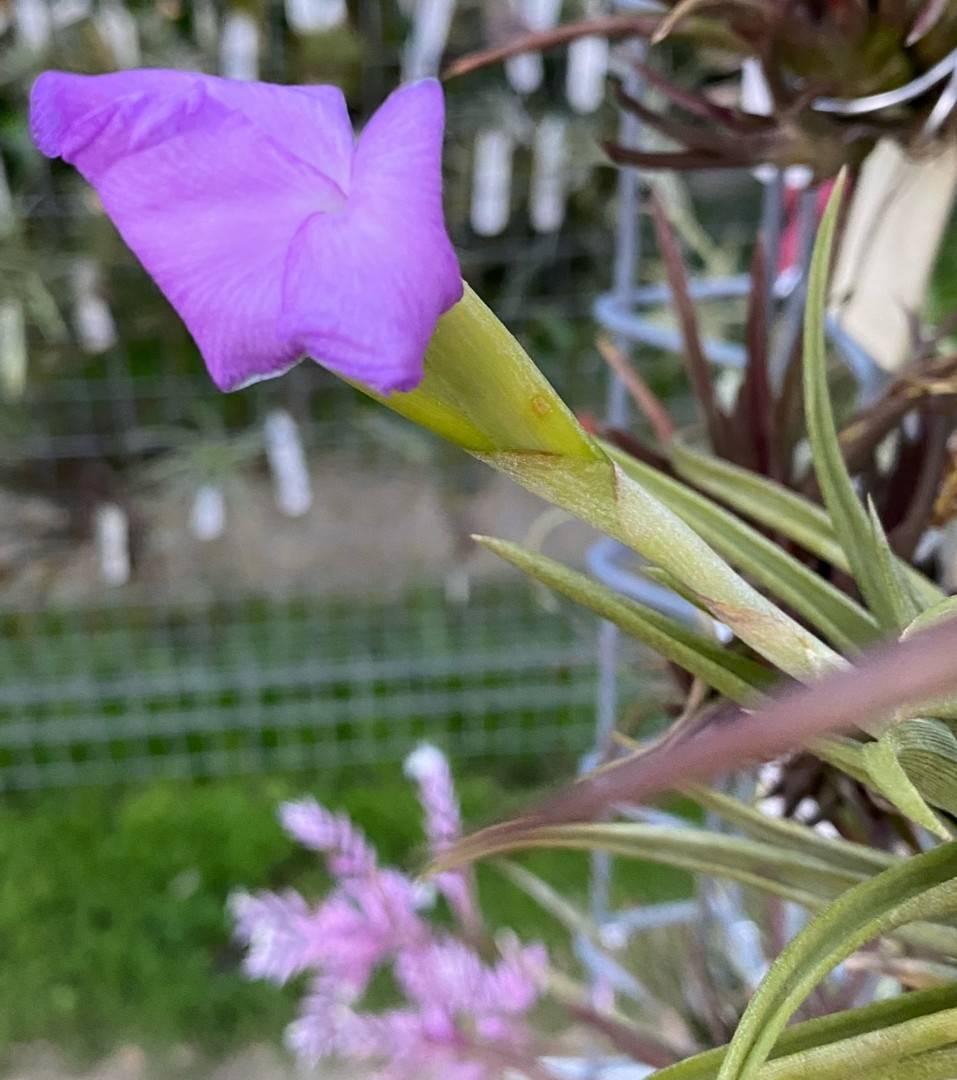
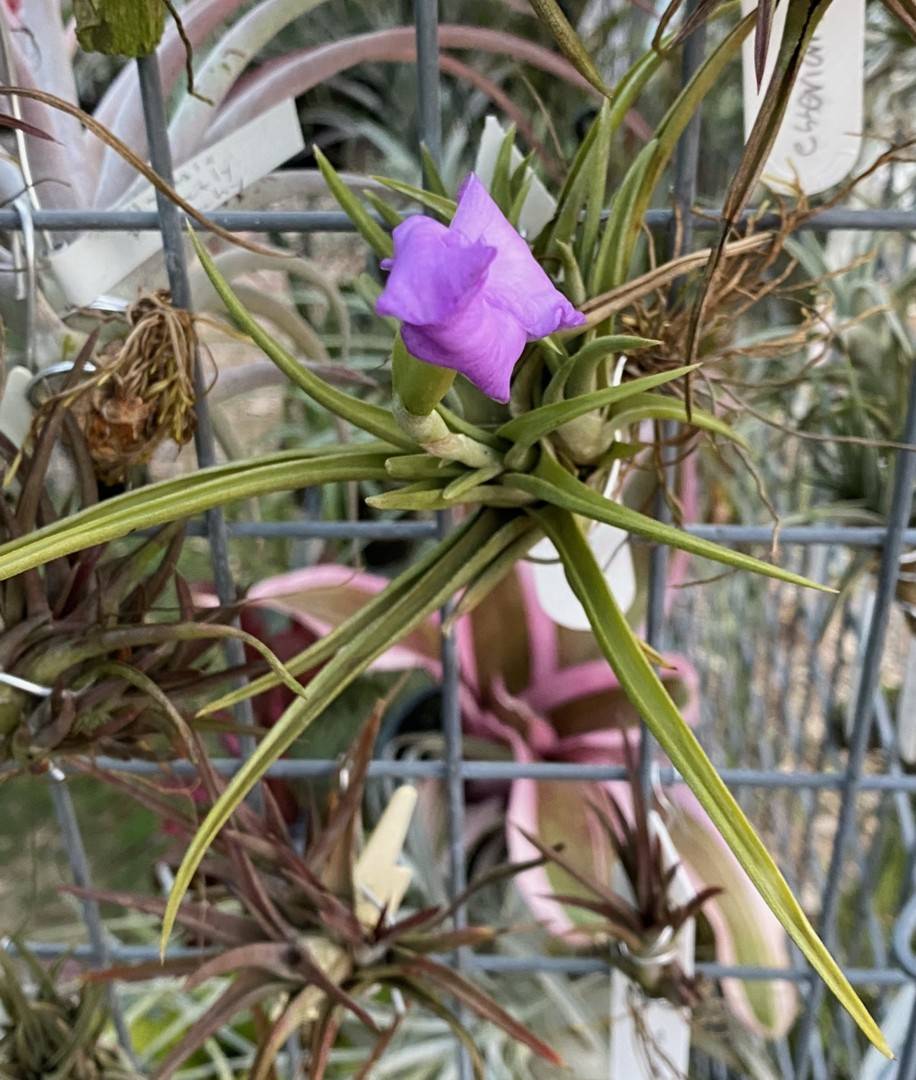
TILLANDSIA ESSERIANA Rauh et L. B. Smith by WERNER RAUH AND L. B. SMITH in Journ Brom Soc 21(1): 3-6 1971
On his trip to Paraguay in 1966 to study the cactus vegetation, Gerd Esser, a student of Prof. Dr. Rauh, visited also the Cerro Guazu, an isolated mountain (Fig. 1) in the Department of Amambay, at a distance of about 30 miles from the Brazilian border. Esser reached this Cerro by horse after a two-week trip from Lima (Department of San Pedro), and he is of the opinion that no botanist had visited this Cerro up to this time. It is situated in the midst of an evergreen tropical rain forest and bears on its steep rocks a remarkable vegetation of Cacti, such as a new, undescribed Pilosocereus (Esser 14945), a Monvillea, some xerophytic bromeliads, as Dyckia spec.(Fig. 2), Tillandsia lorentziana, and the new T. esseriana, an interesting species with blue-violet flowers. This plant has flowered several times in the collection of the Botanical Garden of the University of Heidelberg, and the authors have dedicated it to its discoverer, Dr. G. Esser.
T. esseriana is mostly a stemless or short-stemmed plant, forming clusters and clumps.
The numerous very hard, reddish-green or reddish-violet leaves form a dense rosette; the younger ones are erect, the elder, up to 50 cm long, are recurved at their tips.
Their sheaths are not very distinct, about 5 cm long, more or less 3 cm broad, on the upper side white at the base, brown upwards and leather-brown below;
the narrow-lanceolate, about 1 cm broad leaf blades are tapering into a pungent tip, silver gray lepidote and underneath prominently nerved.
The inflorescences, simple or few branched (1-2 spikes), are up to 35 cm long and shorter than the leaves (Fig. 3).
The bracts of the 15 cm long scape are imbricate; the basal ones have a short blade, the upper are scale-like, green and scarcely lepidote.
The flower bracts of the 10-17 cm long spikes are densely imbricate, 4,5 cm long, 1,5 cm broad, green, short tipped, scarcely lepidote, rounded on the back and slightly keeled only near the tip.
The flowers are big; they are about 5 cm long and 4,5 cm in diameter; the bright violet plates of the petals are spreading, broad-oval and slightly undulated at their margins, 2- 2,5 cm long, 1,8 cm broad.
The stamens are deeply included in the tube;
the sepals are connate up to a length of 2 cm, green at the base, white at their tips;
the style is 1,5 cm long and shorter than the stamens.
T. esseriana is a striking plant when flowering, for the flowers are as big as those of T. lindenii. It is easy to cultivate, needing only a little water and full sunshine.
The type locality is steep rocks of the Cerro Guaza in the Department of Amambay of northeastern Paraguay. The collection-number of the holotype is ES 14853 (1966). The Latin diagnosis is published in Phytologia, Vol. XX, p.162.
From: Mihaly Ferenczi, 15 Oct 2009
Some time ago we had a little discussion about this plant. Going through my old emails I found this one, which was sent by Mr Esser to a friend of mine. I hope you will find this information useful.
"Jose,
it grows on steep rocks of sandstone (interglacial sandstones of the Tubarao series of upper Carbon), but only on north, northeast or northwest facing rocks. That means (southern hemisphere) towards the sun. On the south-facing walls are no Tillandsias, but Philodendron.
On the natural sites, the plants are about 10 inches high, often branching and forming clumps. I think for a good growth the plants should be kept extremely hot and sunny, in open and rather dry air. No damp atmosphere. Frequent watering over the leaves (that means once every 2-3 days). Dew at night would be good.
The climate at Sydney is much colder than that at the natural sites of T. esseriana. In Paraguay, during the growing season, you have 30-40C during the day (at the T. esseriana rocks much more) and 20-25C at night. The coldest month has about 25C during the day and 10-15C during the night. You have precipitation throughout the year, i.e. no dry season. So keep T. esseriana at the hottest and sunniest place you have in your garden. Never put it in a greenhouse, except at low temperatures in winter.
I do not know very much about the nutrient requirements of this plant. Since it grows on sandstone rocks their nutrient requirements may be higher than that of other species, but you should test this.
Hope I could help you. Regards, Gerd Esser."
From: Peter Tristram, 18 Dec 2014
Hi Bruce. Stunning small species! It blooms for ages too.
That's the red-leafed clone. It was given to me, as a tiny pup, by Werner Rauh in 1988, at Dennis Cathcart's place (or at the conf in Miami Ė I forget). He had a collection of Tills in his many pockets after flying in from Germany and gave them away to different fanatics, like me. I think it was his 80th birthday party too.